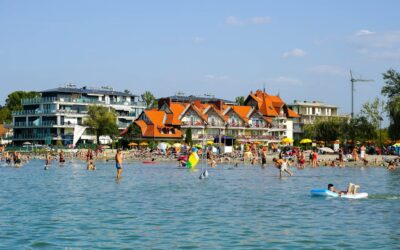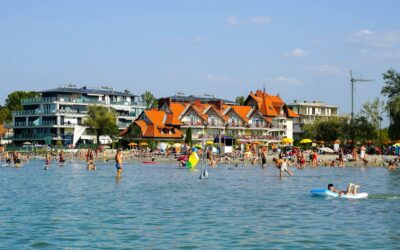Iceland may not have been known as a global culinary destination in the past, but its food scene has experienced a transformation in recent years. With a unique blend of traditional dishes and modern cuisine, Iceland offers a range of exciting culinary experiences that reflect its culture, geography, and history.
In this guide, we’ll take you on a culinary tour of Iceland, exploring traditional Icelandic dishes like hákarl (fermented shark) and skyr, as well as modern interpretations of these flavours in contemporary restaurants.
Traditional Icelandic Dishes: A Taste of History
Iceland’s traditional cuisine has deep roots in the country’s Viking past, shaped by its harsh climate and limited resources. Early Icelanders relied heavily on preservation techniques like smoking, drying, and fermenting to make food last through the long winters. Today, these ancient practices are still celebrated, providing a glimpse into the island’s culinary heritage.
1. Hákarl (Fermented Shark)
Perhaps the most infamous dish in Iceland, hákarl is fermented Greenland shark, a dish that dates back to the Viking era. Greenland shark meat is toxic when fresh, so Icelanders traditionally buried the meat in gravel and allowed it to ferment for months. This process breaks down the toxins and makes the meat safe to eat, although the resulting flavour is strong and pungent.
Where to Try Hákarl:
– Bjarnarhöfn Shark Museum: Located on the Snæfellsnes Peninsula, this museum offers visitors the chance to learn about the shark-curing process and sample hákarl.
– Þorrablót: A midwinter festival that celebrates Icelandic heritage, where hákarl is often served along with other traditional foods.
Hákarl is not for the faint-hearted, but it’s a must-try for adventurous eaters wanting to experience Icelandic history through food.
2. Skyr
Skyr is a staple in Icelandic cuisine and has been enjoyed for over a thousand years. It’s a cultured dairy product similar to yoghurt but with a thicker consistency and milder flavour. Skyr is packed with protein and is traditionally eaten plain or with berries and sugar. Today, it’s available in various flavours, often enjoyed as a healthy snack or dessert.
Where to Try Skyr:
– Supermarkets and cafes across Iceland stock skyr, but for an authentic experience, try locally made versions from small farms.
– Skyr.is: This brand is known for its traditional and modern takes on skyr, available in grocery stores across the country.
Skyr is one of Iceland’s most versatile foods—perfect for breakfast, dessert, or a protein-packed snack on the go.
3. Svið (Boiled Sheep’s Head)
A traditional Icelandic dish, svið is boiled sheep’s head, typically served with mashed potatoes and turnips. The dish was born out of necessity, as Icelanders would use every part of the animal to avoid waste. While it may sound unusual to foreign visitors, svið is still enjoyed today, especially during the Þorrablót midwinter festival.
Where to Try Svið:
– Fljótt og Gott: Located in Reykjavik’s bus station, this local diner is one of the few places that regularly serves svið.
– Traditional Icelandic festivals: Look out for festivals and events that celebrate Iceland’s culinary heritage, where svið is often featured.
4. Harðfiskur (Dried Fish)
Harðfiskur is dried fish, usually cod or haddock, and is a popular snack in Iceland. The fish is dried using traditional methods—either hung outside in the wind or in specially designed drying houses. It’s typically served with butter and is rich in protein, making it a great snack for locals and travellers alike.
Where to Try Harðfiskur:
– Grocery stores across Iceland sell harðfiskur in packaged form.
– Local markets: If you’re looking for a more artisanal version, visit local markets where you can find fresh, hand-dried harðfiskur.
5. Kjötsúpa (Lamb Soup)
Kjötsúpa, or Icelandic lamb soup, is a hearty and comforting dish traditionally made with lamb, potatoes, carrots, and onions. Icelandic lamb is known for its quality, as the animals roam free and feed on wild grasses and herbs. Kjötsúpa is a warming dish that is especially popular during the cold winter months.
Where to Try Kjötsúpa:
– Icelandic Street Food: This Reykjavik restaurant offers a delicious and hearty version of kjötsúpa, served in a bread bowl.
– Cafés and farm restaurants around Iceland, especially in rural areas where lamb is a key ingredient in many local dishes.
Modern Icelandic Cuisine: A Contemporary Twist
While Iceland’s traditional foods are still celebrated, the country has seen a culinary renaissance in recent years, with chefs combining local ingredients with global influences to create innovative dishes. Reykjavik, in particular, has become a hotspot for modern Icelandic cuisine, with restaurants offering unique takes on the island’s culinary traditions.
1. Seafood in Reykjavik
Given its location in the North Atlantic, it’s no surprise that Iceland has some of the freshest seafood in the world. From plump scallops to Arctic char and langoustines, seafood plays a central role in modern Icelandic cuisine. Restaurants in Reykjavik and around the coast showcase the best of Iceland’s seafood, often with a contemporary twist.
Where to Try Seafood:
– Fiskmarkaðurinn (The Fish Market): One of Reykjavik’s most renowned restaurants, known for its creative seafood dishes that blend Icelandic ingredients with Asian influences.
– Sægreifinn (The Sea Baron): A Reykjavik institution, famous for its lobster soup and fish skewers.
– Slippbarinn: Located at the Reykjavik Marina, this restaurant offers fresh seafood with modern, seasonal flavours.
2. Lamb Dishes
Icelandic lamb is a delicacy, thanks to the free-roaming nature of the sheep and the clean, natural diet they enjoy. Chefs in Iceland are known for creating inventive lamb dishes that highlight the meat’s tender texture and rich flavour.
Where to Try Lamb Dishes:
– Grillmarket (Grillmarkaðurinn): This stylish restaurant in Reykjavik focuses on farm-to-table dining, with lamb being one of the standout ingredients.
– Þrír Frakkar: A cosy, traditional restaurant known for its expertly prepared Icelandic lamb dishes.
3. New Nordic Cuisine
Iceland has embraced the New Nordic culinary movement, which focuses on using seasonal, local ingredients in innovative ways. This approach to cooking can be seen across Reykjavik’s top restaurants, where chefs take pride in crafting dishes that are both rooted in tradition and inspired by modern techniques.
Where to Experience New Nordic Cuisine:
– DILL Restaurant: Iceland’s first Michelin-starred restaurant, DILL is at the forefront of New Nordic cuisine in Iceland. The restaurant offers seasonal tasting menus that highlight the best local produce.
– VOX Brasserie & Bar: Located in the Hilton Reykjavik Nordica, VOX offers a contemporary take on Icelandic and Nordic cuisine, with an emphasis on fresh, local ingredients.
4. Modern Bakeries and Cafés
In addition to its traditional fare, Reykjavik has a thriving café scene, with bakeries and coffee shops offering modern takes on Icelandic favourites. From freshly baked sourdough bread to innovative pastries, these spots are perfect for grabbing a quick bite or enjoying a leisurely coffee break.
Where to Try Modern Icelandic Pastries:
– Sandholt Bakery: One of Reykjavik’s most popular bakeries, Sandholt is known for its fresh bread, pastries, and cakes.
– Braud & Co.: A trendy bakery famous for its cinnamon buns, sourdough loaves, and beautifully crafted pastries.
Conclusion
Iceland’s culinary scene is a delightful fusion of traditional flavours and modern innovation. From the ancient preservation techniques of hákarl and harðfiskur to the refined dishes of DILL Restaurant and Fiskmarkaðurinn, there’s something to satisfy every palate. Whether you’re exploring Reykjavik’s dynamic restaurant scene or tasting traditional dishes in rural towns, Iceland offers an exciting gastronomic journey that reflects both its history and its modern-day creativity.
So pack your appetite, and get ready to savour the best of Icelandic cuisine—from Viking-era dishes to cutting-edge culinary creations!





0 Comments